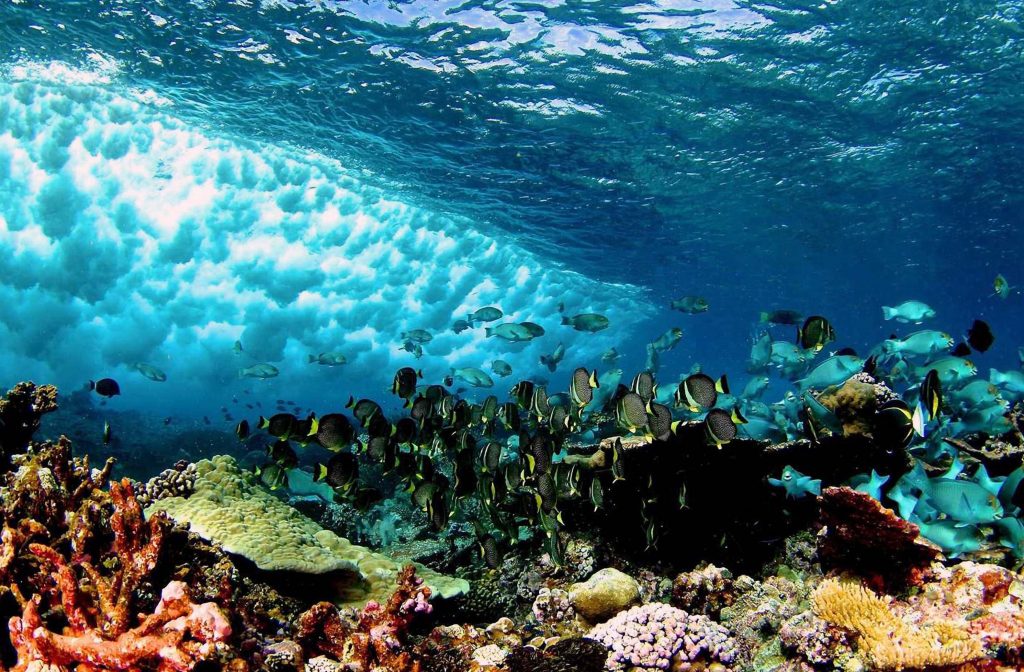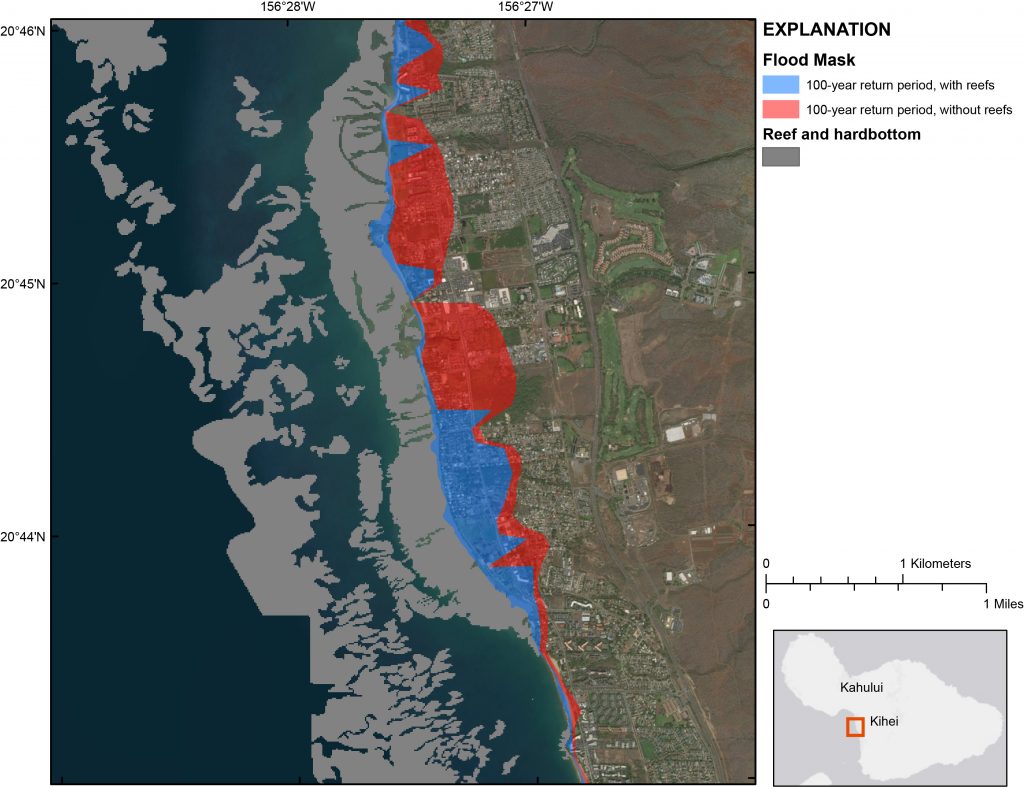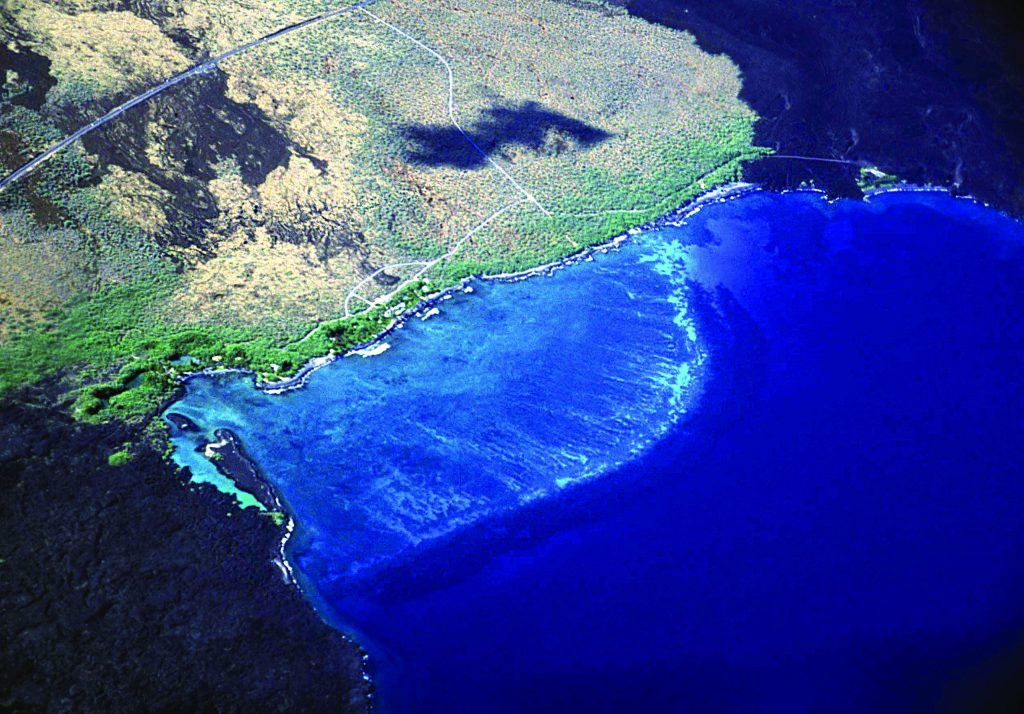Maui Reefs Provide $376 Million Worth of Coastal Flood Protection
In Hawai’i, reefs provide more than $836 million in flood protection benefits to people, property and jobs every year—more than every other state and territory in the nation, according to a new report.
On Maui, reefs provide an estimated $376 million in flood protection benefits each year according to the report released by the US Geological Survey, The Nature Conservancy and the University of California Santa Cruz entitled Rigorously Valuing the Role of US Coral Reefs in Coastal Hazard Risk Reduction.
Nationwide, reefs across the US provide more than $1.8 billion dollars in flood protection benefits every year. The study reports that includes $11 million on Kauaʻi, $51 million on Hawaiʻi Island and $394 million on Oʻahu. In a 50-year storm, the coral reefs off Honolulu alone could provide more than $435 million in flood protection benefits, according to the report.
Co-author Dr. Michael Beck of UC Santa Cruz and former lead scientist for The Nature Conservancy’s Global Oceans Program, said “Most people have no idea how valuable coral reefs are for coastal protection. Now we do. Reefs act as submerged breakwaters, ‘breaking’ waves and dissipating up to 97% of their energy offshore.” According to Beck, “While these may look like general, ‘back of the envelope’ numbers, they are not. They are based on what are now the best flood risk maps available for US coastlines, predicting risk at 10 meters by 10 meters, which is about one one-hundredth the area of a city block.”
“This information is game-changing for Hawai’i,” says The Nature Conservancy’s Hawai’i Marine Program Director, Kim Hum. “We know that Hawai’i benefits in many ways from healthy coral reefs, and now we can quantify those benefits and identify specifically who receives them—whether they be coastal businesses, resorts, homeowners or critical government infrastructure like military bases, roads and sewage treatment plants.” According to Hum, “We also now know the areas at the greatest risk of flooding, and where reef restoration may be able to reduce that risk. By rigorously valuing these benefits, we can help mobilize the public and private investments needed for reef management.”
The information contained in the report can be used by coastal managers, emergency response agencies and local and national government officials to identify where to invest in reef management as a natural defense against coastal flooding related to hurricanes, storms, sea level rise and other coastal threats. “Our goal in this study was to provide sound science to identify where, when and how US coral reefs provide significant coastal flood reduction benefits to ultimately save dollars and protect lives,” said USGS research geologist and lead author, Dr. Curt Storlazzi.
The bad news is that we are rapidly losing coral reefs in Hawai’i and around the globe—along with the benefits they provide to people and coastal infrastructure. For example, in 2015 Hawai’i experienced its worst mass bleaching event in modern history, with an average of 50% loss of live coral cover on Maui and up to 90% loss of coral on some West Hawai’i reefs, according to recent assessments conducted by The Nature Conservancy, the State Division of Aquatic Resources, and the National Oceanographic and Atmospheric Administration. The good news is that reefs can recover and may even adapt to changing ocean conditions, particularly if we identify the threats to them and sufficient financial resources to manage those threats.
According to Dr. Beck, “The US has already appropriated more than $100 billion to recover from hurricanes Harvey, Maria and Irma. Coral reefs can reduce the damage caused by future storms, but we need to identify new and innovative funding opportunities to pro-actively build our reefs and coastal resilience. For example, disaster recovery funding from FEMA is now being used to identify where reefs can provide natural coastal defenses.” Adds Beck, “The insurance industry can also support incentives for habitat conservation and restoration. They are starting to do just that by ensuring that habitats are included in industry risk models and with the first ever trust to fund an insurance policy for coral reefs in Mexico.
According to Hum, The Nature Conservancy is now assessing the viability of a similar reef insurance policy for Hawai’i’s reefs. “Reefs provide hundreds of millions of dollars in flood protection services to the State every year—in addition to their many other benefits to people and nature. We should be investing in reef management and insuring our investment so that we can keep those benefits in the years to come.”

An example of how a coral reef dissipates wave energy. Photo from Palmyra Atoll. Photo by Kydd Pollock/Nature Conservancy

100-year flood areas, areas with a 1% chance of a very large flood in any given year, on the coast of Kihei, Maui. Blue areas denote the areas that would flood during a 100-year storm; the red areas denote the regions that would flood without the presence of coral reefs (marked in gray) and thus are protected by coral reefs. A 100-year flood has a 1 percent chance of happening every year. Map courtesy USGS.

Aerial view of Waimanalo coastline, Oahu. Hawaii’s reefs serve as nature’s breakwaters, buffering the coastline and sheltering nearshore home from big waves and storms and protecting seashores from erosion. Photo courtesy The Nature Conservancy.

Kiholo Bay, Hawaii Island: Photo courtesy The Nature Conservancy










